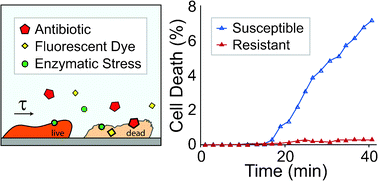A microfluidic platform for rapid, stress-induced antibiotic susceptibility testing of Staphylococcus aureus
Abstract
The emergence and spread of bacterial resistance to ever increasing classes of

* Corresponding authors
a
Center for Manufacturing Innovation, Fraunhofer USA, Brookline, Massachusetts
E-mail:
asauerbudge@fraunhofer.org
b Division of Infectious Diseases, Department of Medicine, Brigham and Women's Hospital, Harvard Medical School, Boston, Massachusetts
c Department of Mechanical Engineering, Boston University, Boston, Massachusetts
d Department of Biomedical Engineering, Boston University, Boston, Massachusetts
The emergence and spread of bacterial resistance to ever increasing classes of

 Please wait while we load your content...
Something went wrong. Try again?
Please wait while we load your content...
Something went wrong. Try again?
M. Kalashnikov, J. C. Lee, J. Campbell, A. Sharon and A. F. Sauer-Budge, Lab Chip, 2012, 12, 4523 DOI: 10.1039/C2LC40531H
To request permission to reproduce material from this article, please go to the Copyright Clearance Center request page.
If you are an author contributing to an RSC publication, you do not need to request permission provided correct acknowledgement is given.
If you are the author of this article, you do not need to request permission to reproduce figures and diagrams provided correct acknowledgement is given. If you want to reproduce the whole article in a third-party publication (excluding your thesis/dissertation for which permission is not required) please go to the Copyright Clearance Center request page.
Read more about how to correctly acknowledge RSC content.
 Fetching data from CrossRef.
Fetching data from CrossRef.
This may take some time to load.
Loading related content
